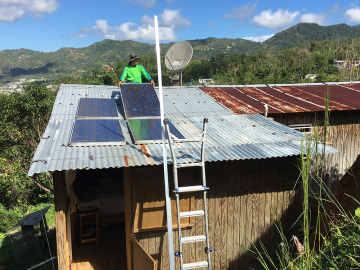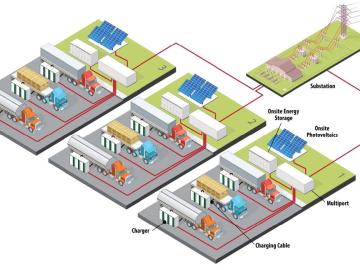
Filter News
Area of Research
- Advanced Manufacturing (1)
- Biology and Environment (26)
- Computational Biology (1)
- Computational Engineering (2)
- Computer Science (5)
- Electricity and Smart Grid (1)
- Energy Science (36)
- Fusion and Fission (5)
- Fusion Energy (6)
- Materials (19)
- Materials for Computing (4)
- Mathematics (1)
- National Security (7)
- Neutron Science (2)
- Nuclear Science and Technology (2)
- Quantum information Science (1)
- Sensors and Controls (1)
- Supercomputing (10)
News Type
News Topics
- (-) Fusion (18)
- (-) Grid (29)
- (-) Machine Learning (24)
- (-) Mercury (7)
- (-) Microscopy (22)
- (-) Nanotechnology (18)
- (-) Summit (10)
- 3-D Printing/Advanced Manufacturing (47)
- Advanced Reactors (15)
- Artificial Intelligence (25)
- Big Data (29)
- Bioenergy (40)
- Biology (48)
- Biomedical (24)
- Biotechnology (11)
- Buildings (31)
- Chemical Sciences (22)
- Clean Water (21)
- Composites (14)
- Computer Science (56)
- Coronavirus (17)
- Critical Materials (14)
- Cybersecurity (9)
- Emergency (1)
- Energy Storage (45)
- Environment (88)
- Exascale Computing (4)
- Fossil Energy (1)
- Frontier (4)
- High-Performance Computing (23)
- Hydropower (8)
- Irradiation (2)
- Isotopes (18)
- ITER (4)
- Materials (45)
- Materials Science (49)
- Mathematics (8)
- Molten Salt (5)
- National Security (20)
- Neutron Science (37)
- Nuclear Energy (35)
- Partnerships (4)
- Physics (20)
- Polymers (15)
- Quantum Computing (6)
- Quantum Science (16)
- Security (8)
- Simulation (17)
- Space Exploration (10)
- Statistics (1)
- Transportation (48)
Media Contacts

Growing up in China, Yue Yuan stood beneath the world’s largest hydroelectric dam, built to harness the world’s third-longest river. Her father brought her to Three Gorges Dam every year as it was being constructed across the Yangtze River so she could witness its progress.

Climate change often comes down to how it affects water, whether it’s for drinking, electricity generation, or how flooding affects people and infrastructure. To better understand these impacts, ORNL water resources engineer Sudershan Gangrade is integrating knowledge ranging from large-scale climate projections to local meteorology and hydrology and using high-performance computing to create a holistic view of the future.

When virtually unlimited energy from fusion becomes a reality on Earth, Phil Snyder and his team will have had a hand in making it happen.

A new report published by ORNL assessed how advanced manufacturing and materials, such as 3D printing and novel component coatings, could offer solutions to modernize the existing fleet and design new approaches to hydropower.

ORNL researchers Ben Ollis and Max Ferrari will be in Adjuntas to join the March 18 festivities but also to hammer out more technical details of their contribution to the project: making the microgrids even more reliable.

When aging vehicle batteries lack the juice to power your car anymore, they may still hold energy. Yet it’s tough to find new uses for lithium-ion batteries with different makers, ages and sizes. A solution is urgently needed because battery recycling options are scarce.

Researchers at Oak Ridge National Laboratory have designed architecture, software and control strategies for a futuristic EV truck stop that can draw megawatts of power and reduce carbon emissions.

Oak Ridge National Laboratory researchers serendipitously discovered when they automated the beam of an electron microscope to precisely drill holes in the atomically thin lattice of graphene, the drilled holes closed up.

John “Jack” Cahill is out to illuminate previously unseen processes with new technology, advancing our understanding of how chemicals interact to influence complex systems whether it’s in the human body or in the world beneath our feet.

Having lived on three continents spanning the world’s four hemispheres, Philipe Ambrozio Dias understands the difficulties of moving to a new place.


